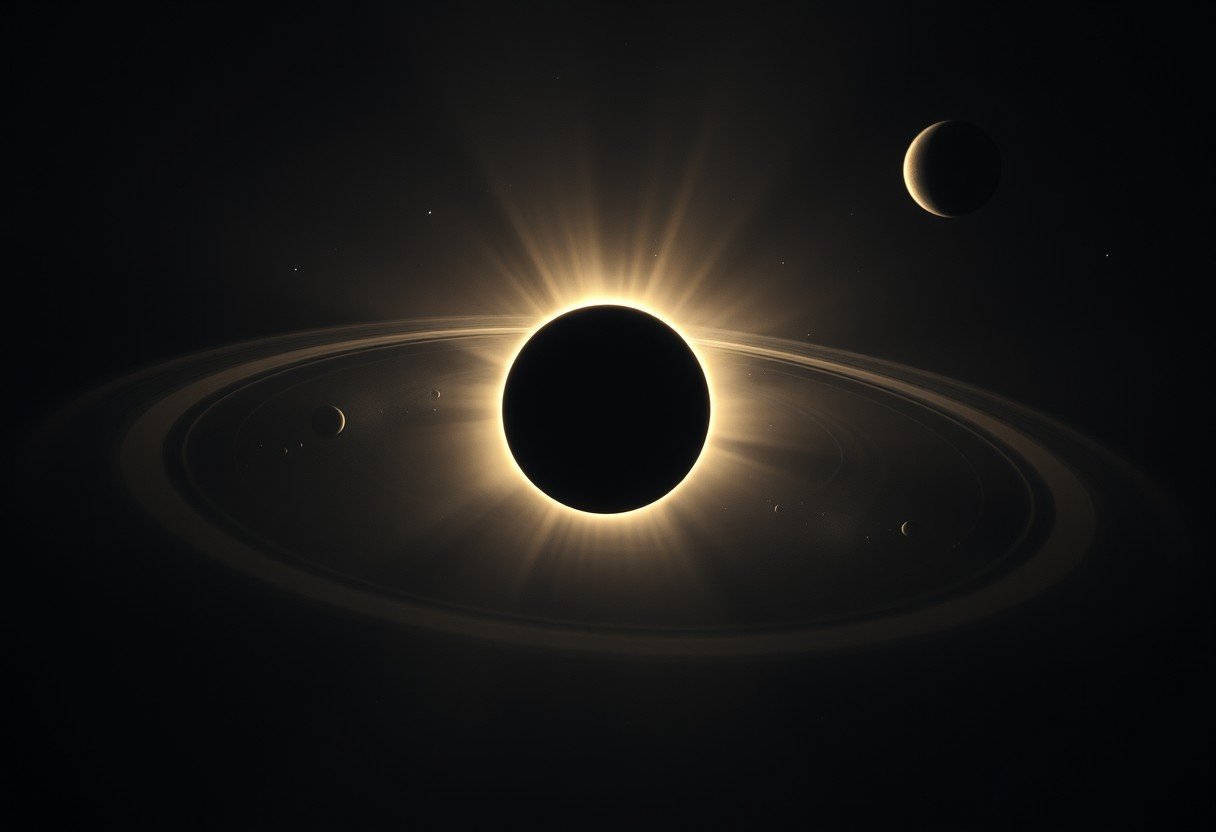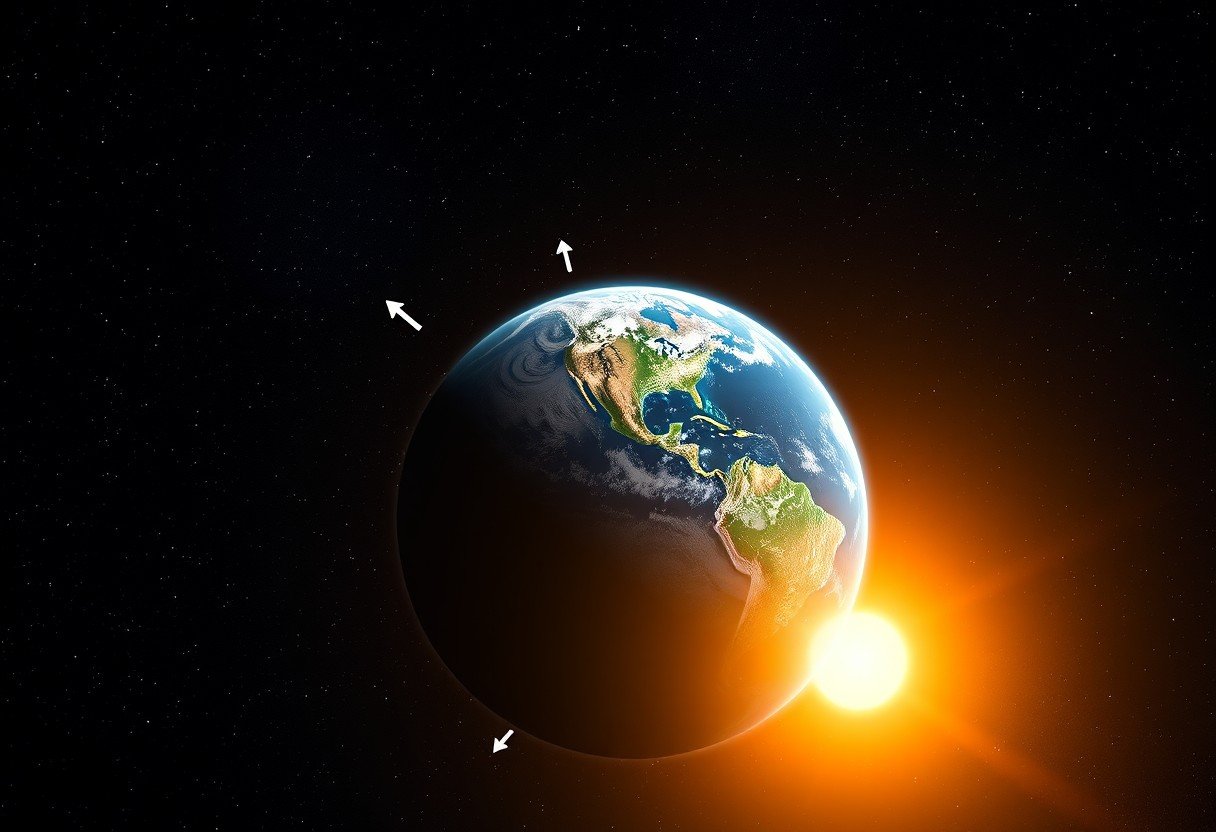Have you ever wondered what would happen if our Sun suddenly became a black hole? It’s a fascinating thought experiment. The most surprising part is that we wouldn’t fly off into space. If the Sun kept its mass, its gravitational pull on Earth would stay the same. However, our planet would be plunged into eternal darkness and a deep freeze, posing an unimaginable challenge for life.
Would Earth Get Sucked into the Black Hole Sun?
One of the biggest misconceptions about black holes is that they are cosmic vacuum cleaners. This isn’t true. A black hole’s gravity is only extreme very close to it.
From our distance of 93 million miles, gravity is all about mass. If the Sun collapsed into a black hole but kept the exact same mass, its gravitational pull on the planets would not change at all.
The Earth would continue to orbit the black hole just as it orbits the Sun now. The same goes for Mars, Jupiter, and all the other planets in our solar system. Our cosmic neighborhood would keep its structure, but it would be a dark and cold one.
The Sudden Plunge into Darkness and Cold
The most immediate and terrifying effect would be the loss of light. The last sunlight to leave the Sun would reach us in about 8 minutes, and then, total darkness. The stars would be our only natural light, making the night sky incredibly clear but offering no warmth.
Without the Sun’s constant radiation, Earth’s temperature would plummet. Scientists estimate that the average global surface temperature would drop to freezing within a week and fall to around -100°F within a year.
The consequences would be swift and catastrophic:
- Photosynthesis would stop almost instantly, killing most plant life within weeks.
- The food chain would collapse as herbivores starve, followed quickly by carnivores.
- Our oceans would begin to freeze over, starting from the surface and moving down.
This rapid change would trigger an ice age unlike any in Earth’s history, freezing the planet solid.
Long-Term Survival on a Frozen Planet
Life on the surface would become impossible for most species, including humans. We would be entirely dependent on technology for survival. Humanity’s best hope would be to move underground, harnessing geothermal energy from the Earth’s core for heat and electricity.
Creating sustainable, closed-loop ecosystems would be essential. We would need artificial light to grow food and generate oxygen. Life would become a constant struggle against the cold and dark. Some life might survive naturally. Extremophiles living near deep-sea hydrothermal vents wouldn’t even notice the Sun was gone, as they get their energy from the Earth’s internal heat, not sunlight.
Why a Black Hole Sun is Just a Thought Experiment
While it’s a fun scenario to explore, it’s important to remember that our Sun will never become a black hole. The science of stellar evolution is very clear on this.
To collapse into a black hole, a star needs to be at least 20 times more massive than our Sun. Our star is simply too small. Instead of a dramatic collapse, the Sun has a much different fate ahead of it. In about 5 billion years, it will expand into a red giant, likely swallowing the inner planets. After that, it will shed its outer layers and shrink down into a white dwarf, a dense stellar remnant that will slowly cool over trillions of years.
The Science Behind a Sun-Mass Black Hole
If our Sun did become a black hole, it would be incredibly small. An object’s size as a black hole is defined by its Schwarzschild radius, the boundary of the event horizon. For an object with the Sun’s mass, this radius would be just under 2 miles. Our entire star would be compressed into an object smaller than a city.
This highlights the extreme density of black holes. Let’s compare this hypothetical event to other real celestial events to understand the difference.
| Celestial Event | Key Implication |
|---|---|
| Sun-Mass Black Hole (Hypothetical) | Gravity remains the same at a distance; loss of light and heat. |
| Supernova Explosion | Massive explosion ejects material and creates a neutron star or black hole. |
| Red Giant Phase | The star expands massively, engulfing nearby planets. |
Understanding these differences shows how unique and stable our current solar system is, all thanks to the Sun’s current state.
Frequently Asked Questions
What would happen to the planets’ orbits if the Sun became a black hole?
Nothing would change. Because the black hole would have the same mass as the Sun, its gravitational pull on the planets would be identical. Earth and the other planets would continue in their same orbits.
How quickly would Earth freeze without the Sun?
The planet’s temperature would drop very fast. Surface temperatures would fall below freezing within a week and reach unsurvivable levels of around -100°F within a year, eventually freezing the oceans solid.
Could any life on Earth survive this event?
Most surface life would perish. However, some extremophiles, which are organisms that live in extreme environments like deep-sea hydrothermal vents, would likely survive because they rely on geothermal energy from Earth’s core, not sunlight.
Is it possible for our Sun to actually become a black hole?
No, the Sun does not have enough mass. Only stars that are about 20 times more massive than our Sun can become black holes at the end of their lives. Our Sun will instead become a white dwarf.









Leave a Comment